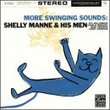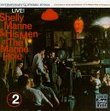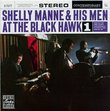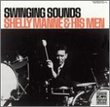| All Artists: Shelly Manne Title: West Coast Sound Members Wishing: 1 Total Copies: 0 Label: Jvc Japan Release Date: 7/17/2001 Album Type: Import, Limited Edition, Original recording remastered Genres: Jazz, Pop Styles: Cool Jazz, Bebop Number of Discs: 1 SwapaCD Credits: 1 |
Search - Shelly Manne :: West Coast Sound
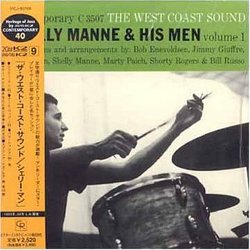 | Shelly Manne West Coast Sound Genres: Jazz, Pop
Japanese remastered reissue of 1955 album packaged in a limited edition miniature LP sleeve. |
Larger Image |
CD DetailsSynopsis
Album Description Japanese remastered reissue of 1955 album packaged in a limited edition miniature LP sleeve. Similar CDs
|
CD ReviewsShelly Swings with the Best of the West William Faust | Columbus, Ohio | 12/27/2000 (5 out of 5 stars) "No one could swing a pair of brushes like Shelly Manne. No disrespect to Buddy, Gene, Jo, Mel or the other giants of the engine room, but Shelly Manne was just so smooth. This disc, a reissue of Contemporary 3507, is a gem of west coast jazz and features arrangements by several of the people who defined the style in the 1950's (Marty Paich, Bill Holman, Shorty Rogers etc.). Originally recorded in 1955, Manne has surrounded himself with several west coast studio fraternity members including Bob Cooper, Curtis Counce, Bob Enevoldsen, Russ Freeman, Jimmy Giuffre, Bill Holman, Art Pepper, Bud Shank, Marty Paich and others. 12 tracks in all and every one features nice tight clever orchestrations over swing tempos or ballad treatments. I only really disliked one track (Fugue) which was a little too experimental for me. Highly recommended, especially for lovers of California Cool." If you like West Coast, this is a fine choice. R. J. Maxwell | Deming, NM | 08/19/2006 (4 out of 5 stars) "Shelly Manne had a distinguished career as a drummer and here he works with a kind of Who's Who in West Coast Jazz -- Bob Cooper, Jimmy Giuffre, Marty Paich, Art Pepper and Bud Shank, among others.
The sound we mostly associate with West Coast jazz comes less from the solos than from the smooth arrangements. They sound more like miniature versions of Woody Herman and Stan Kenton than like home-grown small ensembles designed around a few instruments. And they tended to use oddball instruments -- French horns and whatnot. You ought to hear Bob Cooper on another album struggling with a jazz interpretation of "I Can't Get Started" -- on an oboe! Most of the soloists are competent and professional musicians without being particularly innovative. Gerry Mulligan (not heard here) was an exception. So was Jimmy Giuffre who went on a few years after this recording to come out with a very personal breakthrough album that included a couple of tunes by Jerome Kern in which Giuffre shook of the cliches and did some extraordinary things. And after that went on to play experimental jazz in empty night clubs because evidently no one but musical theorists could understand them. But here everyone is pretty much at his peak. It was 1953 and 1955 after all, the heyday of West Coast Jazz and its popularity. Aficionados had Howard Rumsey and his Lighthouse All-Stars in their minds constantly. The musicians all seemed to know one another and to have worked together at various times in different venues. This is a good example of their having fun while producing some memorable work." |

 Track Listings (12) - Disc #1
Track Listings (12) - Disc #1